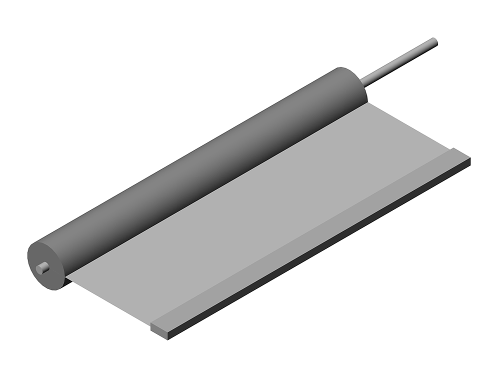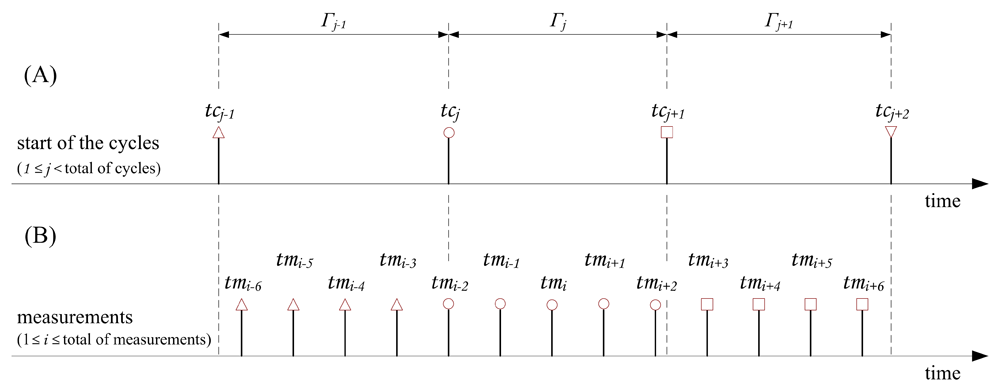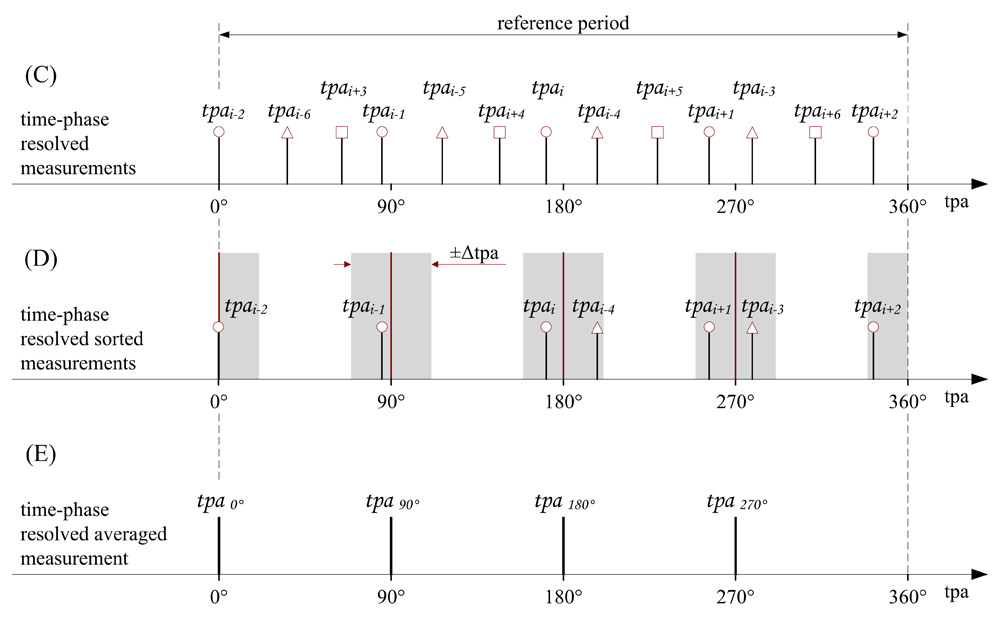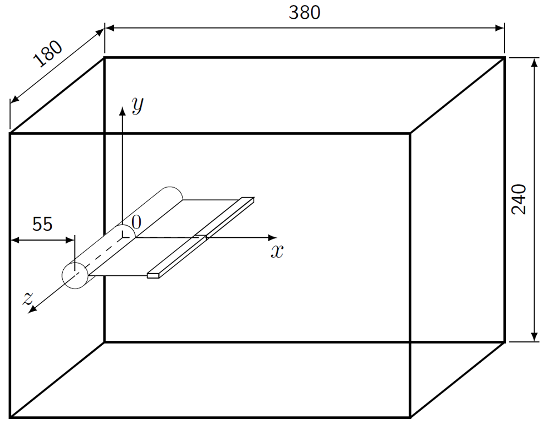Combined Flow and Deformation Measurements of FSI-Induced Oscillation of a Bluff Flexible Structure in Uniform Flows
Experiments by Pereira Gomes and Lienhart
Description
Characterisation of the FSI-induced two-dimensional limit-cycle oscillation (LCO) of a flexible structure consisting of a bluff front end in uniform flows. The measurements were performed for different fluid viscosities and approaching flow velocities and covered both laminar and turbulent flow regimes. In total, 2 test cases were measured in laminar and 1 test case in turbulent flows. The measurements in the turbulent regime were conducted in water, whereas a highly viscous polyethylene glycol (PEG) syrup was chosen as test liquid for the tests in laminar flows.
A complete description of the present set of experiments is available as a PDF file: l_data_description.pdf.
Geometrical parameters
Model definition
The structure model is presented in figure 1. It consists of a 0.04 mm thick stainless-steel sheet attached to a free rotating 22 mm diameter circular cylinder. At the trailing edge of the thin sheet, a rectangular mass was attached. The overall length of the model was defined as 82 mm and the spanwise dimension was chosen to be equal to the spanwise dimension of the test section, to guarantee the two-dimensionality of the experiments. Just a small gap of 1.5 mm between the model and the walls of the test section was set in order to avoid any possible friction between the moving parts of the model and the walls.
 Fig. 1: Flexible structure model
Fig. 1: Flexible structure model
The geometric definition of the model is presented in figure 2. The table below summarizes the mechanical and dynamic properties of this model.
| Property | Value |
|---|---|
| \(\rho_{front body}\) [kg/m3] | \(2828\) |
| \(E_{thin sheet}\) [kN/mm2] | \(200\) |
| \(\rho_{thin sheet}\) [kg/m3] | \(7855\) |
| \(\rho_{rear mass}\) [kg/m3] | \(7800\) |
| \(m\) [g] | \(248.8\) |
| \(I_0\) [kg m2] | \(2.59\times 10^{-4}\) |
| \(x_{CM}\) [mm] | \(15.20\) |
| \(f_0\) [Hz] | \(1.90\) |
| \(f_1\) [Hz] | \(5.89\) |
| \(f_2\) [Hz] | \(27.43\) |
| \(f_3\) [Hz] | \(92.73\) |
 Fig. 2: Geometry of the flexible structure model (dimensions in mm)
Fig. 2: Geometry of the flexible structure model (dimensions in mm)
Flow domain definition
The measurements were conducted in a vertical, closed-loop tunnel capable of operating with liquids of different viscosities. The spatial dimensions of the tunnel test section are shown in figure 3. It had a 180 mm x 240 mm cross-sectional area and a total length of 380 mm. As a direct consequence of the vertical orientation of the tunnel, the gravity force was aligned with the flow (\(x\) axis, see figure 3). In this way, the gravity force did not introduce any asymmetry in the experiments. The test model was mounted 55 mm downstream of the inlet plane of the test section with a free rotational degree-of-freedom. The supporting system used two low friction bearings and was designed to guarantee frictionless rotation of the model around the \(z\) axis (see figure 3).
Flow parameters
The fluid properties and inlet velocities for the different test cases are summarized in the table below. Within the temperature range of the tests, the kinematic viscosity and density of the fluid were measured to be constant.
| Test case | \(U_{\infty}\) [m/s] | \(Re\) [-] | \(\nu\) [m2/s] | \(\rho\) [kg/m3] |
|---|---|---|---|---|
| LL1 | \(1.07\) | \(145\) | \(1.64times 10^{-4}\) | \(1050\) |
| LL2 | \(1.45\) | \(195\) | \(1.64\times 10^{-4}\) | \(1050\) |
| TL1 | \(0.68\) | \(15400\) | \(0.97\times 10^{-6}\) | \(998\) |
The test cases inlet velocity conditions were characterized, in the absence of any model, at the location \(x = -55\) mm in the centre plane of the test section (\(z=0\) mm, see figure 3). The flow angularity was measured to be less than 0.5o and the RMS value associated with the fluctuation of the magnitude of the velocity was less that 1%. These values, and also the mean flow velocity, corresponded to the interval -85 mm \(\le y \le \) 85 mm. The inlet velocity profile is available for each test case in the following files:
| Test case | File name |
|---|---|
| LL1 (\(U_{\infty}=1.07\) m/s) | ll1_inlet_velocity_profile.dat |
| LL2 (\(U_{\infty}=1.45\) m/s) | ll2_inlet_velocity_profile.dat |
| TL1 (\(U_{\infty}=0.68\) m/s) | tl1_inlet_velocity_profile.dat |
Experimental details
Flow field measurements
The flow velocity field was measured using a DANTEC two-dimensional, two-component particle image velocimetry (PIV) system. For the acquisition of the images, two synchronized 1280 pixel x 1024 pixel CCD cameras equipped with 60 mm focal length macro lenses were adopted to acquire two simultaneous and adjacent time-dependent pairs of images from the centre plane of the test section (\(x-y\) plane, see figure 3). The PIV images acquired by the two cameras were then imported into a MatLab-based post-processing script to stitch the corresponding pairs of images before being correlated. Opting for this solution, it was possible to achieve an extended 270 mm x 170 mm flow field measuring area while keeping the spatial resolution of the measurements as high as 7.53 CCD pixel/mm.
For the illumination of the flow, two laser light sources were used from both sides of the test section, each to illuminate the flow at each side of the model, and, therefore, to avoid any shadow region in the flow. The lasers were of the double-head pulsed Nd:YAG type and delivered light pulses of a wavelength of 532 nm with a maximum energy of 120 mJ.
As seeding particles, 10 \(\mu\)m mean diameter hollow glass spheres were chosen. Non-coated spheres were used for the test case TL1 whereas silver-coated spheres were used for test cases LL1 amd LL2.
Structure deformation measurements
To measure the position of the structure, a stereo pattern recognition (SPR) measuring system was adopted. Two synchronized cameras were mounted in a stereoscopic arrangement to acquire images of the flexible structure illuminated by a laser light sheet from each side of the model. The quantitative analysis was performed after the images acquisition in the MatLab workspace by a script developed for the specific task. The software analysed and compared the images from both sides of the model and reconstructed to scale the image of the light sheet reflected by the structure. To achieve that purpose, it mapped the pixel value in the gray-scale of the entire image and detected the line resulting from the intersection of the laser sheet and the structure. The recognition of the reflection line, and posterior reconstruction of the structure deformation, was performed in the mathematical space, based on calibrated reference images.
Reconstruction of the measurements in the time-phase space
The measuring system was operated at constant acquisition rate and the reconstruction of the measurements was performed during the post-processing period. This approach was chosen instead of triggering the data acquisition by the experiment in order to couple with the usual cycle-to-cycle fluctuation of the structure oscillation period found in free oscillation tests. A typical data reconstruction using this method is shown in figure 4. Simultaneously with the acquisition of the measurements, two kind of events, the acquisition of the measurements \(tm_i\) [figure 4(B)] and the beginning of the movement cycles \(tc_j\) [figure 4(A)], were recorded. These time events were detected using the camera trigger signal and the signal of an angular position sensor located in the rotating axle of the structure, respectively.
The event monitoring was performed by an hardware module designed based on a field programmable gate array (FPGA) and a 1 MHz internal clock. It was capable of recording up to 250 events per second with an accuracy of 2 \(\mu\)s.
From the recorded events time information, a post-processing software computed the time-phase angle \(\phi\) for each acquired measurement. At this point, the resolved measured data could be reorganized in a reference period equal to the mean period of all acquired cycles [figure 4(C)] to be sorted out according to a predefined time-phase angle resolution and uncertainty [figure 4(D)]. Finally, the data falling within one time-phase angle slot were averaged to obtain the final result [figure 4(E)]. In the present test cases, the reconstruction of the experimental results was performed with a time-phase resolution and uncertainty of 5o and 0.5o, respectively, and the final result corresponded to the mean value of 100 realizations.

 Fig. 4: Time-phase resolved measurements reconstruction scheme
Fig. 4: Time-phase resolved measurements reconstruction scheme
Measurement Errors
The spatial resolution of the velocity field measurements was defined as 2.1 mm and the accuracy associated with them was measured better than 1.5% for the undisturbed flow. Both the \(u\) and \(v\) components, and also the magnitude of the velocity, were normalized by the free stream flow velocity, \(U_{\infty}\).
As far as the model deformation is concerned, the results comprise just the flexible part of the model. That corresponds to the points between \(x=11\) mm and \(x=61\) mm (\(y=0\) mm) of the undeformed model (see figure 3). The position of the rear mass is given by the deformed position of the last point of the flexible part of the model and the position of the model trailing edge. The RMS value associated with the fluctuation of the structure deformation results was evaluated as 0.26 mm for test cases LL1 and LL2 and 0.4 mm for the test case TL1, within an interval of confidence of 90%.
Available Data
Data available consists of:
- Phase traces of the angle of the front body part of the model through each of the cases' oscillation period (together with the measured oscillation frequency)
- Phase traces of the coordinates of the trailing edge of the flexible body through the oscillation period
- Coordinates giving the shape of the flexible body structure in \(5^o\) steps through the oscillation period
- Maps of the phase averaged \(U\) and \(V\) velocities at \(5^o\) intervals through the oscillation period
Sample plots of selected quantities are available.
The data files can be downloaded as compressed archives, or individually from the tables below.
| Inlet Velocity Profiles | ||
|---|---|---|
| Test case | \(U_{\infty}\) [m/s] | File name |
| LL1 | 1.07 | ll1_inlet_velocity_profile.dat |
| LL2 | 1.45 | ll2_inlet_velocity_profile.dat |
| TL1 | 0.68 | tl1_inlet_velocity_profile.dat |
The files below give the time-phase trace of the angle of the front part of the model body (\(\theta\)), and the coordinates of the trailing edge of the flexible part, within an oscillation period, together with the frequency of the limit cycle oscillation of each case.
| Test case | Oscillation Frequency | Front body part angle | Trailing edge location |
|---|---|---|---|
| LL1 | 6.38 Hz +/- 0.6% | ll1_front_body_angle.dat | ll1_trailing_edge_coordinates.dat |
| LL2 | 13.58 Hz +/- 0.9% | ll2_front_body_angle.dat | ll2_trailing_edge_coordinates.dat |
| TL1 | 4.45 Hz +/- 0.4% | tl1_front_body_angle.dat | tl1_trailing_edge_coordinates.dat |
The files below contain the phase-resolved data on the mean flow field, and the coordinates showing the position and shape of the flexible body structure.
References
- Gomes, J.P. (2011). Fluid-structure interaction-induced oscillation of flexible structures in uniform flows, Ph.D. Thesis, Erlangen.
- Gomes, J.P., Lienhart, H. (2009). Experimental benchmark: Self-excited fluid-structure interaction test cases, in Fluid-Structure Interaction II: Modelling, Simulation, Optimisation, (ed. Bungartz, H.J., Mehl, M., Schäfer, M.), Springer-Verlag.
- Gomes, J.P., Yigit, S., Lienhart, H., Schäfer, M. (2011). Experimental and numerical study on a fluid-structure interaction reference test case. Journal of Fluids and Structures, Vol. 27, pp. 43-61.
Acknowledgements
The authors gratefully acknowledge the financial support for their research work through the German Science Foundation (DFG), Germany, and Fundação para Ciência e Tecnologia (FCT), Portugal. In addition, the authors acknowledge the funding of the Erlangen Graduate School in Advanced Optical Technologies (SAOT) by DFG in the framework of the German excellence initiative.
Indexed data:
| case088 (dbcase, flow_around_body) | |
|---|---|
| case | 088 |
| title | Combined flow and deformation measurements of FSI-induced oscillation of a bluff flexible structure in uniform flows |
| author | Pereira Gomes, Lienhart |
| year | 2011 |
| type | EXP |
| flow_tag | 2d, unsteady, separated, fsi, bluff_body |
